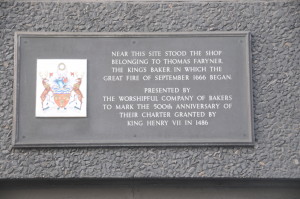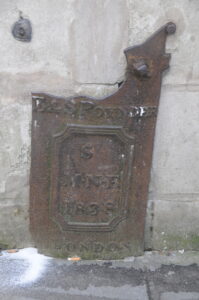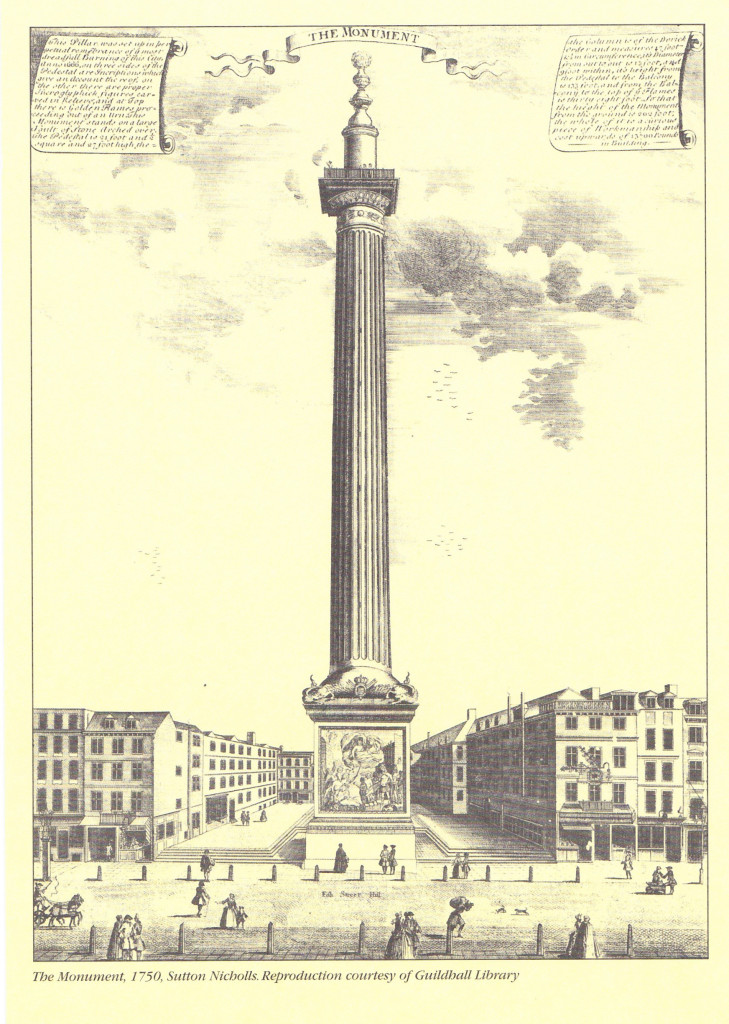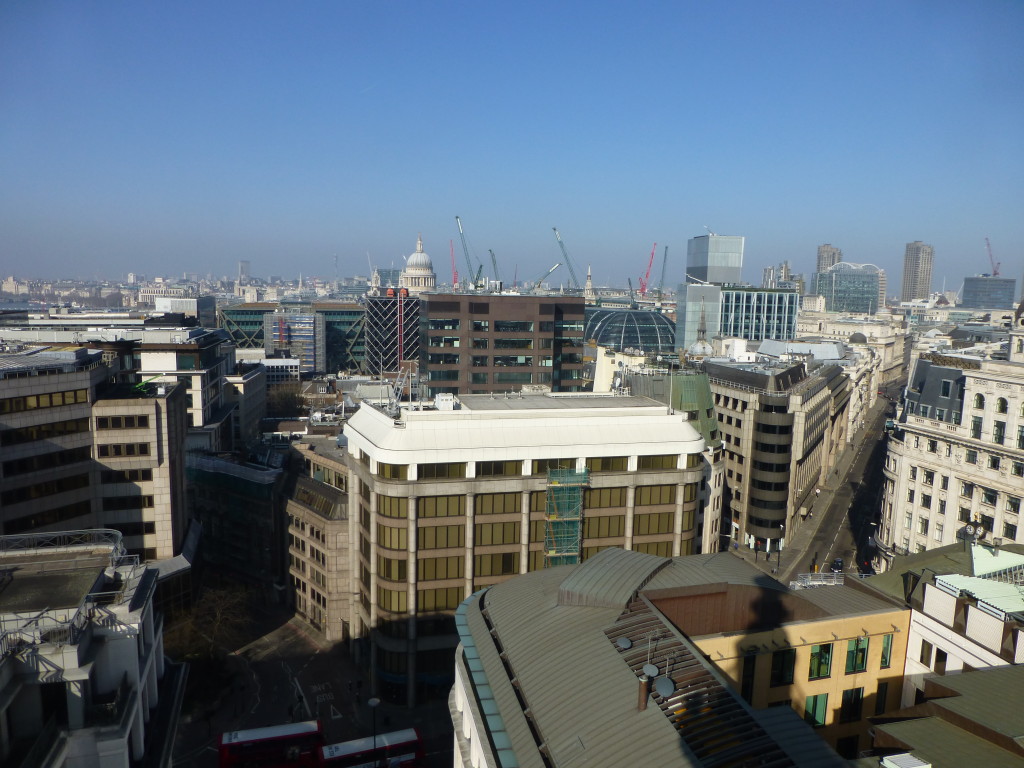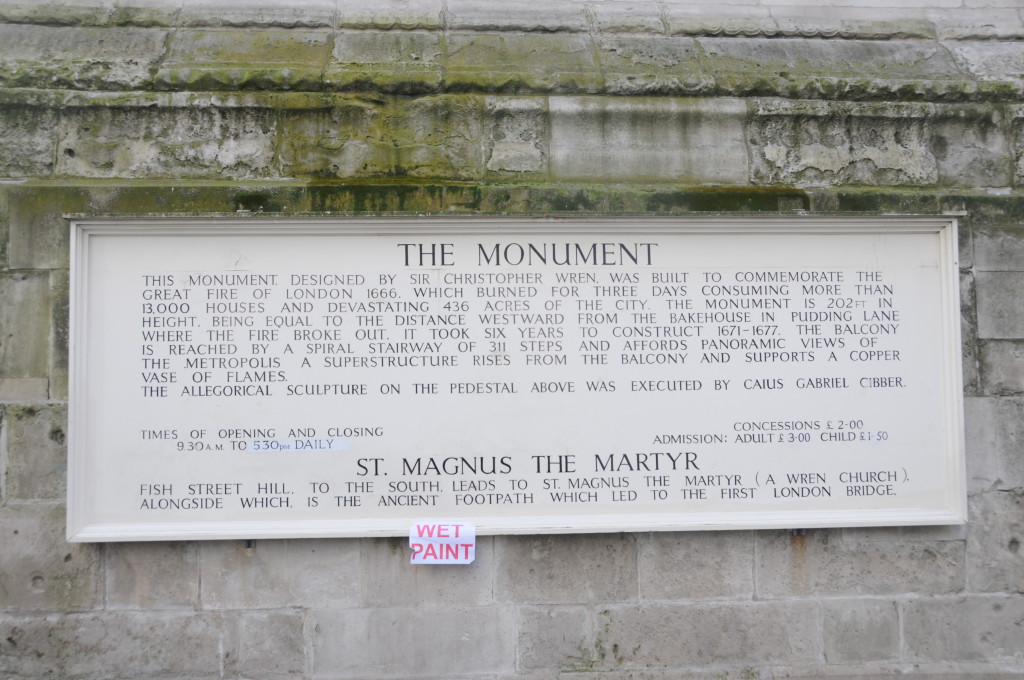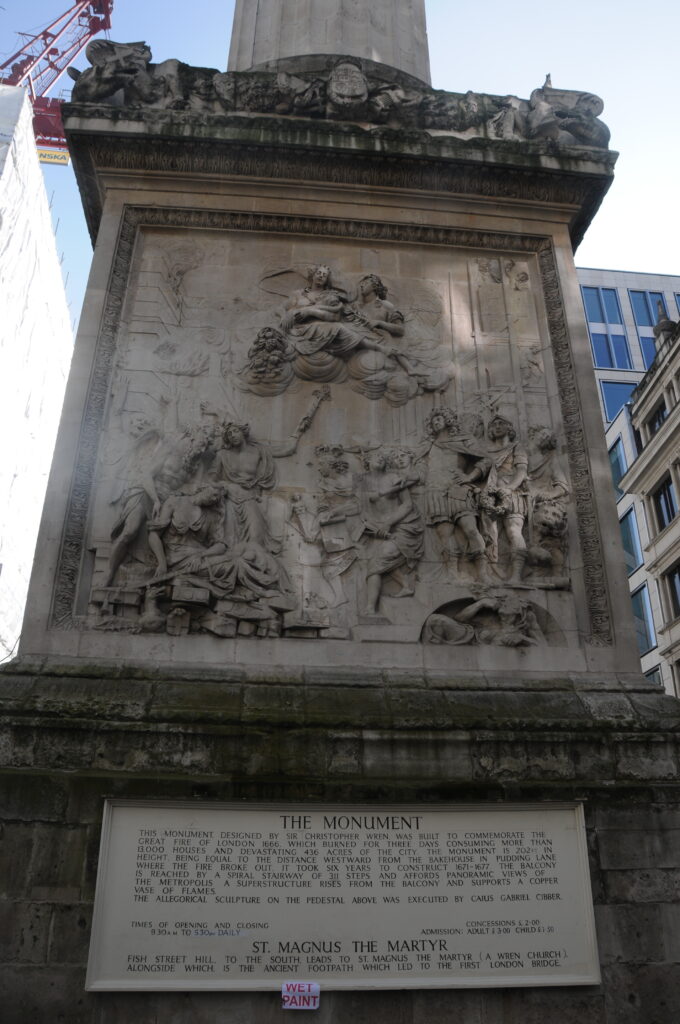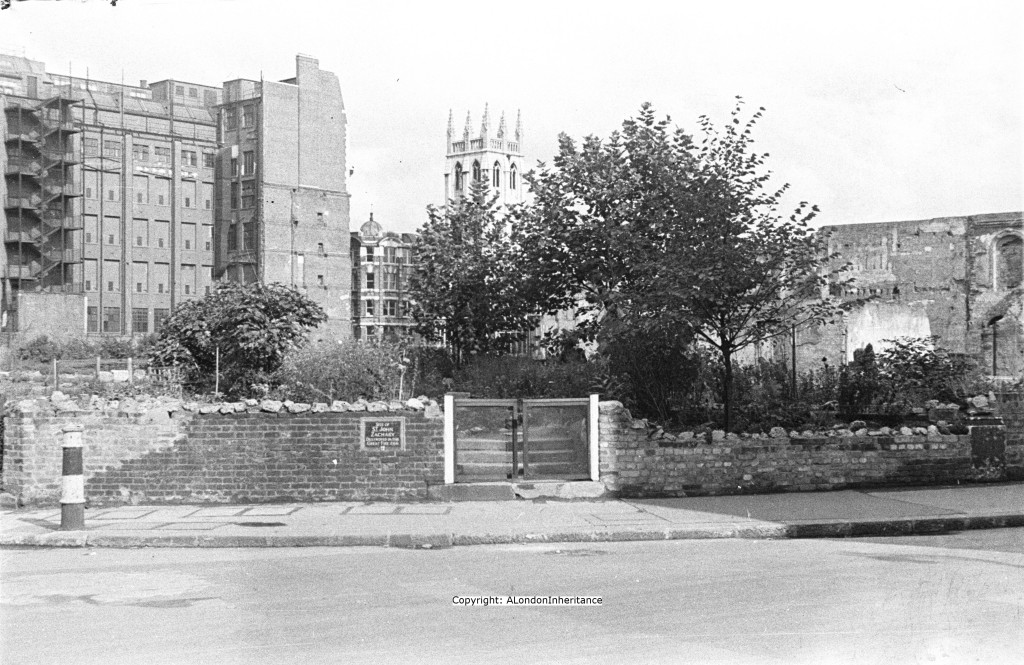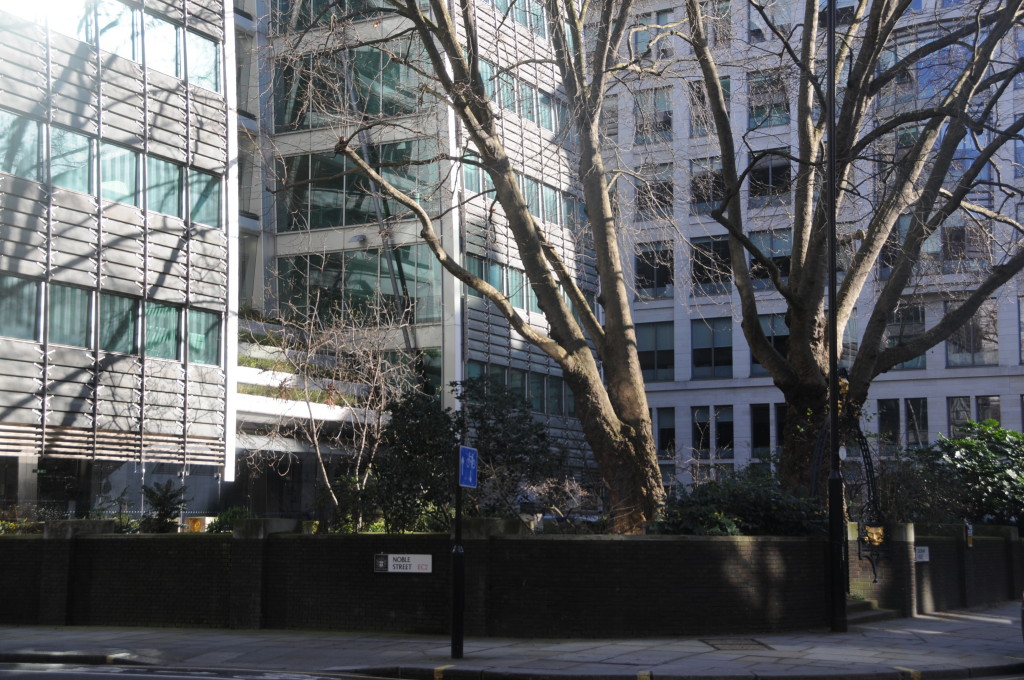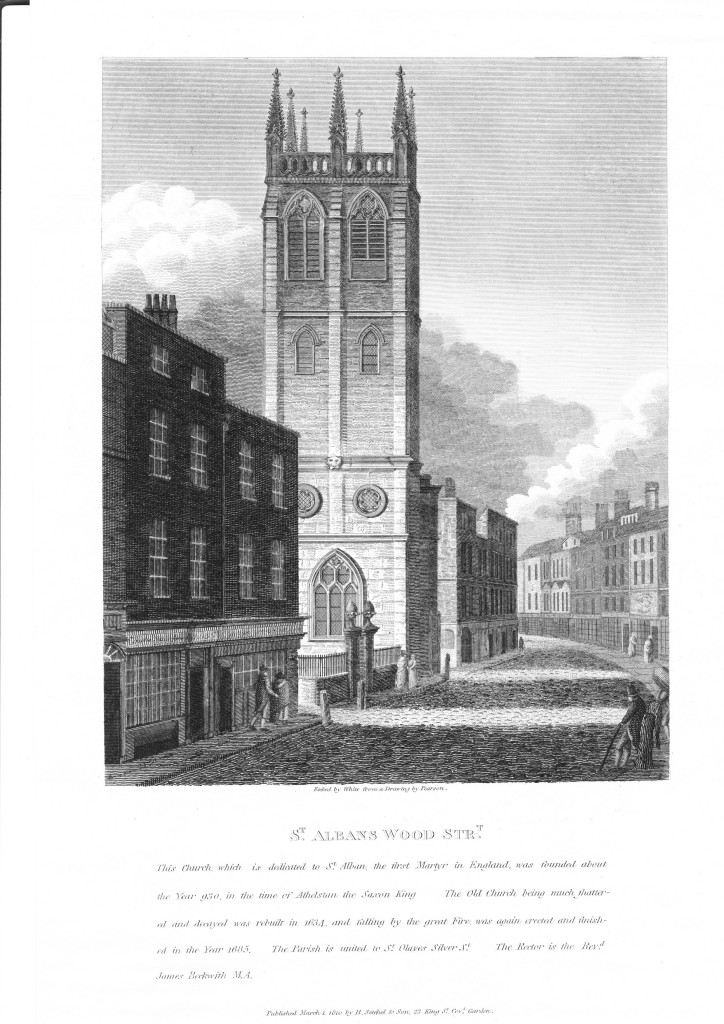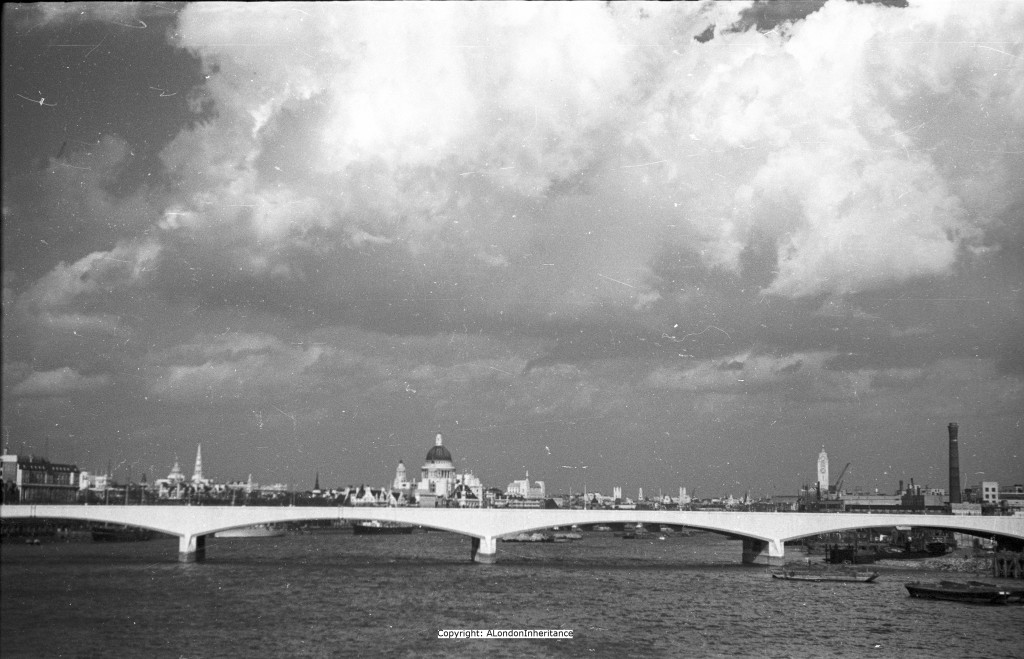These photographs were taken on Tower Hill in the early 1950s, no later than 1953 and show Johnny Eagle, the Tower Hill Escapologist and Strong Man who performed on Tower Hill for many years.
The following photograph is taken from almost the same viewpoint. The new Visitor Centre, built in 2004 covers the area where my father took the original photo so I could not get exactly the same perspective.
Note how the level of the roadway and pavement up against the wall has been raised considerably. The building behind the KFC and Costa advertising is the original building from my father’s photo (this advertising is indicative of one of the big differences between the streets of London in the late 1940s and early 1950s and today, the amount of street clutter we now have, whether advertising, traffic signs, CCTV cameras etc.)
Johnny Eagle, the Tower Hill Escapologist, performed at Tower Hill for almost 20 years and was also to be found at other city locations across the country, such as the Birmingham Bull Ring.
There is a British Pathe News film clip of a Buskers Concert at the Royal Albert Hall in 1969 which includes Johnny Eagle performing. It gives you an idea of what his performance on Tower Hill would have been like. Find it here: http://www.britishpathe.com/video/buskers-concert-at-royal-albert-hall
He was born circa 1916 and died in 2001 and was buried in Witton Cemetery near Birmingham.
The white post at bottom right on the 2014 photo is a Tower of London Liberty Boundary Marker. As a royal palace and garrison, the Tower had a special administrative status for taxation and law enforcement from the middle ages to the late 19th Century. The markers ensured it was clear where the boundary between the authority of the City and the Tower was to be found.
This photo is looking back towards the Tower.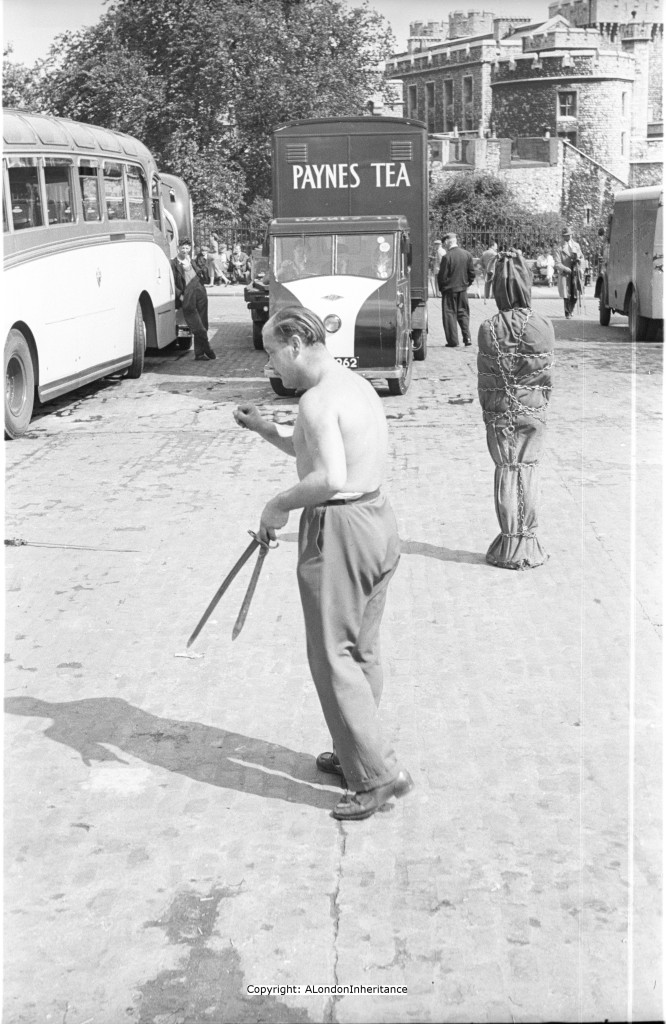
The Paynes Tea van is from George Payne & Co, a Tea Merchant based near Tower Bridge. The Company was involved with the development of tea brands for Sainsbury’s, which included the Red, Blue and Green labels that were launched at the opening of the Ealing branch of Sainsbury’s in 1903. George Payne & Co evolved into Finlays who still produce Sainsbury’s Red Label tea, although now from near Doncaster rather than central London.
The following is looking back up Tower Hill towards the offices of the General Steam Navigation Company (GSN). The Company was founded in 1824 and ran steam ship services around the UK, near-Continental and to the Mediterranean. GSN ran the very popular London to Margate passenger service and for several years the annual number of passengers carried exceeded a million. Londoners escaping the city for the seaside! GSN continued through the 19th and 20th centuries running passenger and cargo services, but in 1971 the General Steam Navigation Company was fully purchased by P&O.








